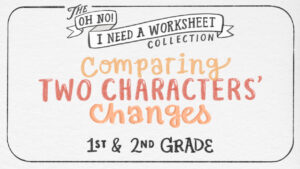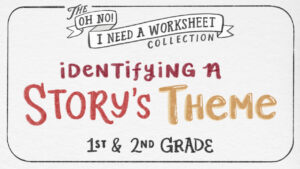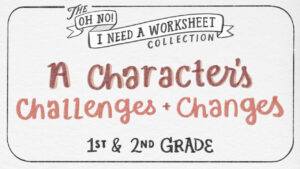
Paragraphs: Systems of Sentences
Want students to understand how a paragraph fits together? Explode one and make them reassemble it using the clues in each sentence! I even wrote a little app to bust a paragraph up for you.

Analyze Characters Using Philosophy
What is the Brick Pig’s philosophy? How would he apply it to the characters in Harry Potter?

Comparing Characters
Your young students will compare how two characters have changed in a story.

Characters’ Faults Can Also Be Strengths
Strength and weakness are often two sides of the same coin. Students will explore how a character’s flaw can be a benefit.

Characters’ Talents and Multiple Intelligences
How do characters from novels line up with Gardner’s Multiple Intelligences?

Analyze Character Change with Depth and Complexity
Your students will use Depth and Complexity to note how a character’s main trait changes across a story.

Characters Dressed as Other Characters for Halloween
What if one character dressed up as another for Halloween? Would the Cat in the Hat pick Captain Jack Sparrow, because they’re both chaotic yet good-natured people? Would Elsa dress up as The Ice King since they are both lonely?

Identifying A Story’s Theme
Teach your young students to identify the moral or the theme of a story.

Main Idea and Details
Young students can use this big idea organizer to identify the main idea and support it with details.

Not Like The Others: Charlotte’s Web
Students will determine which of the characters is not like the others.

Think Like A Philosopher
What would Socrates have thought if he watched Frozen?

Identifying Author’s Voice
What if… Edgar Allen Poe wrote Alice’s Adventures in Wonderland?

Virtue or Vice?
Aristotle noted that positive traits and negative traits are often the same thing, but just in different amounts. The right amount is a virtue, but too much or too little and it’s a vice.

A Character’s Challenges and Changes
Your 1st and 2nd graders will analyze how a character responded to a challenge.

Better Stories Part 4: Character Archetypes
Are students’ characters a bit flat? Archetypes give them a strong foundation on which to build their own characters as well as a tool to analyze existing stories.

Literary Technique: Juxtaposition
Put a grumpy character next to a joyful one and they make each other stand out even more. Opposites are powerful!

Stories with the Same Problems and Solutions
Have you ever noticed that some stories have awfully similar problems? What if we looked for the most unusual way of solving a repeating problem?

Motivation and Moral Development
Can someone do the right thing, but for the wrong reason?

A Character’s Playlist
What playlist of songs best goes with a character’s change over time?
Introduce Symbolism with Pixel Art
Create a pixelated icon that represents the essence of a character!

Showing A Character’s Trait
We tell students to “show, not tell” in their writing, but this advice isn’t effective until they experience the difference. In this video, we’ll put a famous character (of students’ choosing) into a mundane situation and develop a fun scene to show off their main traits.

Do Narrators Have Too Much Power?
Imagine being a character in a story. Are you worried that your story’s narrator may inaccurately describe you? What if they reveal something you wanted to be kept secret? Do narrators have too much power!?

Comparing Characters’ Bedrooms
What item’s in a character’s bedroom would reflect their deepest desires? And what if they toured a similar character’s room?